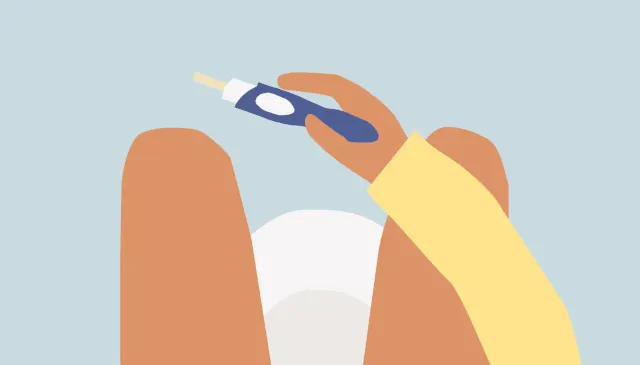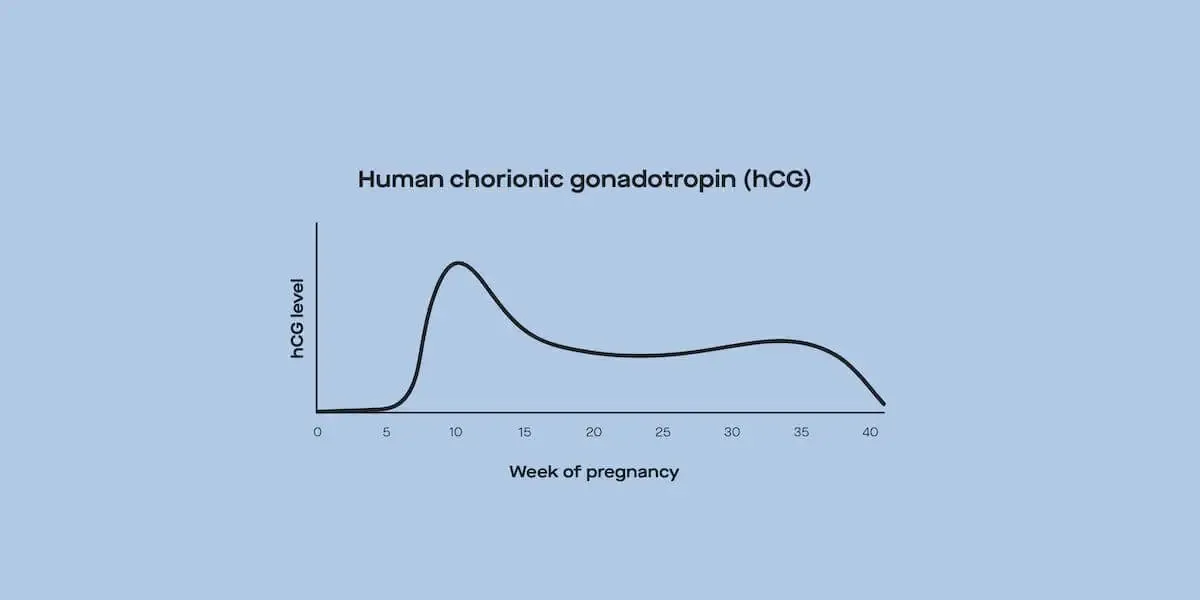Here's what we'll cover
Here's what we'll cover
If you're pregnant, you might be wondering about the possibility of gestational diabetes mellitus, often referred to as just gestational diabetes — and if you've already been diagnosed with the condition, terms like “insulin,” “blood sugar,” and “gestational diabetes diet” may be swirling around in your head. It can be hard to know where to begin in addressing the condition in order to keep you and your baby healthy.
In this article, we're going to break down what gestational diabetes is, what treatments address it, and how harnessing nutrition can help (we’ve even provided some food lists to get you started!). Before diving in, here your biggest takeaways:
In most cases, gestational diabetes is temporary.
The condition can be addressed with lifestyle changes in exercise and nutrition.
While there isn’t a specific “gestational diabetes diet,” there are nutritional guidelines that can help you control it.
First things first: What is gestational diabetes?
The term “gestational diabetes” can cause confusion because other forms of diabetes can be lifelong conditions. But gestational diabetes is usually a temporary kind of diabetes that develops during pregnancy and resolves on its own after delivery. If you're diagnosed with this condition, know that you're far from alone: 10% of all pregnancies in the US are affected by gestational diabetes.
Unfortunately, the medical community does not yet understand what causes some people to develop gestational diabetes. But we do know that gestational diabetes is similar to other forms of diabetes in that it affects the body’s ability to properly break down glucose, the sugar that comes from food.
Gestational diabetes typically occurs when the surge of pregnancy-related hormones causes insulin to stop functioning properly. As a result, glucose builds up — eventually causing a person’s blood sugar level to rise to higher than 140 milligrams per deciliter (mg/dL).
“It can be quite jarring to learn that you have gestational diabetes,” says Dr. Jenn Conti, MD, MS, MSc, OB-GYN and Modern Fertility medical advisor. “I always try to reframe this diagnosis in a productive light, looking at it instead as an opportunity to gain agency over your health — and start making healthier lifestyle changes that will decrease your risk of diabetes and heart disease throughout the rest of your life.”
What impact can gestational diabetes have on you and your pregnancy?
If left unaddressed, gestational diabetes can affect your health and your fetus' health in different ways.
Here's how the American College of Obstetricians and Gynecologists (ACOG) says the condition can affect pregnant people:
It can lead to more sugar being passed to the baby.
It can lead to larger babies.
It can increase the chances of needing a cesarean birth.
It can increase the chances of a complicated vaginal birth (shoulder dystocia, which is an obstetrical emergency).
It can cause heavier bleeding post delivery.
Here's how the Mayo Clinic says your baby can be affected by the condition:
They may need to be induced early, leading to a preterm birth.
If born preterm, they may experience difficulty breathing and regulating their own sugar levels after birth.
They will be more likely to develop diabetes and have a higher body-fat percentage as they get older.
In most cases, gestational diabetes does not cause any major symptoms that you are likely to notice. That said, some people may notice a mild increase in thirst and frequency of urination.
How are people diagnosed with gestational diabetes?
To make sure gestational diabetes doesn't go undiagnosed, healthcare providers screen for gestational diabetes in all pregnant people between the 24th and 28th weeks of pregnancy. If a person is known to be at a higher risk of gestational diabetes (more on this later), their doctor may choose to test for the condition during the first prenatal visit.
Screening for gestational diabetesWhether you're getting screened at your first prenatal visit or later in pregnancy, while the exact ways healthcare providers screen for gestational diabetes may vary, they'll typically include:
A glucose challenge test: One hour after drinking a syrupy, glucose-filled solution, your blood sugar level will be measured by a blood test. If your level is higher than 140 milligrams per deciliter (mg/dL) (some doctors use 130 mg/dL), you'll need to undergo additional testing before being diagnosed with possible gestational diabetes. This is a lower level than the diagnostic cutoff to ensure anyone with elevated blood sugar levels is further evaluated.
Follow-up glucose tolerance testing: The glucose level in the solution will be increased and your blood sugar will be measured every hour for three hours. Two or more "abnormal" readings (using the below criteria) indicate gestational diabetes.
Diagnostic criteria for gestational diabetesDepending on the diagnostic criteria your healthcare provider uses, these blood sugar levels may warrant a diagnosis of gestational diabetes:
After fasting: 95 mg/dL
After one hour: 180 mg/dL
After two hours: 155 mg/dL
After three hours: 140 mg/dL
Can some people be at higher risk for gestational diabetes?
There are some factors that can increase a person’s likelihood of developing gestational diabetes:
If you have a higher body-fat percentage.
If you've been diagnosed with polycystic ovary syndrome (PCOS) (which can lead to insulin resistance).
If you've had gestational diabetes in the past.
If you don't regularly exercise.
If you have a known family history of diabetes.
Black, Hispanic, Native American, and Asian American people are also at higher risk of developing gestational diabetes.
Can you prevent gestational diabetes?
The Mayo Clinic explains that there's no way to completely prevent gestational diabetes, but they recommend a few lifestyle modifications to reduce the likelihood of acquiring the condition, including:
Balanced eating: While the Mayo Clinic mentions weight loss prior to pregnancy (which isn't always an easy or even possible task) as a way to promote a healthy pregnancy in general, they emphasize the importance of "making lasting changes to your eating habits." This means eating a variety of foods including ones high in fiber, fruits, vegetables, and whole grains.
Regular exercise: Keeping active before and during pregnancy (around 30 minutes of moderate exercise a day) can reduce the risk of gestational diabetes.
Monitoring weight gain during pregnancy: When you're growing another human, weight gain is expected — but you can speak to your healthcare provider about the amount of weight gain they anticipate for you.
Gestational diabetes may also have a genetic component, meaning it's likely that modifiable factors are only one piece of the puzzle.
What are the treatment options for gestational diabetes?
If you've been diagnosed with gestational diabetes, Dr. Conti explains that the first step in treatment is seeing if nutritional changes will be enough to control blood sugar levels.
"We check the blood glucose values every morning fasting, and then three times a day, one hour after each main meal," she says. "You should see immediate effects on your blood sugar — i.e., if you eat a high-protein/low-carb lunch, your one-hour postprandial blood glucose value one hour later should be within range. If it's not and the trend continues for several days, you likely need insulin."
70%-85% of people diagnosed with gestational diabetes are able to control it through lifestyle modifications alone.
Nutritional management In a practice bulletin released by ACOG, the leading body of OB-GYNs, three meals and 2-3 snacks per day are recommended for both distributing carb intake throughout the day and reducing big fluctuations in blood sugar. The American Diabetes Association (ADA) recommends working with a registered dietitian or a diabetes educator who can create meal plans tailored to your preferences and health. (In the next section, we're including a list of foods that can help keep blood sugar levels low.)
ExercisePeople with gestational diabetes are encouraged to aim for a minimum of 150 minutes, or 2.5 hours, of moderate-intensity physical activity a week, similar to standard recs for non-gestational diabetes management and general health. Even a simple 15-minute walk after meals is shown to help manage blood sugar levels.
MedicationIf exercise and nutritional modifications aren't able to manage your blood sugar levels, a doctor may recommend medications (though there's no exact threshold for when medication should be prescribed). ACOG's practice bulletin lists the following medications as possible treatments for gestational diabetes:
Insulin: Insulin is the current recommendation for pharmacological management of gestational diabetes because it doesn't cross the placenta (making it safe during pregnancy).
Glyburide and metformin: While these medications aren't approved by the FDA for gestational diabetes and do cross the placenta, they're increasingly being used as alternatives when insulin is too expensive or injections of insulin prove to be challenging.
Is there a "safe food list" for people with gestational diabetes?
Each pregnant body works a little bit differently, so there's no exact meal plan that's considered the best way to manage gestational diabetes. With the help of a registered dietitian or diabetes educator, you can find the right meal plan for you. Keep reading for a list of nutritional guidelines and foods your healthcare provider may recommend during your pregnancy (and pro tips from Dr. Conti!).
Foods to include
1. Vegetables: Non-starchy vegetables are packed with vitamins and nutrients but don't have a lot of carbohydrates. This means you can get a lot of nutrients from vegetables without drastically raising your blood sugar. Here are a few examples of non-starchy veggies:
Mushrooms
Carrots
Broccoli
Salad greens
2. Lean protein: For meat eaters, your healthcare provider may specifically recommend lean meats because they don’t have as much saturated fat (which can impact heart health over time). If you're a vegetarian, they may advise you to be mindful of plant-based proteins with a "hidden" high amount of carbohydrates (like beans). Here are a few examples of lean protein options:
Cottage cheese
Nuts
Edamame
Turkey
3. Complex carbohydrates: Yes, carbs are okay to eat — but your healthcare provider will likely suggest you keep an eye on your portions and choose them carefully. The trick is to look for complex carbohydrates which are whole-grain, high-fiber foods. Here are a few examples of complex carbohydrates:
Whole grains (like brown rice, wheat bread, and oats)
Legumes (like beans, chickpeas, and lentils)
Starchy vegetables (like sweet potatoes, corn, and plantains)
4. Monounsaturated or polyunsaturated fats: Your healthcare provider may tell you to choose these fats over saturated or trans fats. Here are a few examples of foods with monounsaturated or polyunsaturated fats:
Olive oil or canola oil
Avocados
Eggs
Peanut butter
Foods to keep an eye on
1. Sugar: You don't need to turn your back on all sweets, but your healthcare provider may tell you to be mindful of how many sugary drinks, foods, or items with added sugar you're consuming — and try your best to scale back where you can.
2. Simple carbohydrates: While complex carbohydrates provide you with fiber, simple carbohydrates (think white bread, white rice, and even milk!) aren't as nutritious. As a result, your body quickly processes these foods into blood glucose which will increase your blood sugar level. Your healthcare provider will likely suggest you opt for complex over simple.
3. FruitWhen it comes to fruit, Dr. Conti says to keep this in mind: "Fruit is a tricky food group because we often think of them as healthy, which they are, but they also are high in carbs." If your healthcare provider suggests a certain amount of carbs per day, know that snacking on fruits or drinking fruit juice might make you hit that maximum pretty quickly.
Expert recs from someone who's been there
As an OB-GYN who's had gestational diabetes herself during two pregnancies, Dr. Conti has a quick list of foods you may want to add to your grocery list to help with managing the condition:
Lactose-free milk with reduced sugar levels (e.g., Fairlife)
Frozen Greek yogurt bars
Protein bars
Anything labeled as "Keto"
Cane sugar-free and corn syrup-free cereal (e.g., Magic Spoon)
Is gestational diabetes reversible after pregnancy?
Yes! After delivery, in many cases, people's bodies will be able to naturally begin regulating their blood glucose levels again. Between six and 12 weeks after delivery, your doctor will reexamine your blood sugar levels and, if levels are "normal," that means you no longer have gestational diabetes. You will, however, need to undergo a diabetes risk assessment every three years to make sure your blood sugar levels continue to stay "normal."
About half of people with gestational diabetes will go on to develop type 2 diabetes within 5-10 years.
The bottom line
General medical guidance consistently recommends that mindfully approaching nutrition and exercise can be a major factor in controlling blood sugar and managing gestational diabetes. And, in more severe cases, there is always the option of medication.
In other words, when it comes to dealing with gestational diabetes, you have options that will help to keep you and your baby safe.
DISCLAIMER
If you have any medical questions or concerns, please talk to your healthcare provider. The articles on Health Guide are underpinned by peer-reviewed research and information drawn from medical societies and governmental agencies. However, they are not a substitute for professional medical advice, diagnosis, or treatment.










